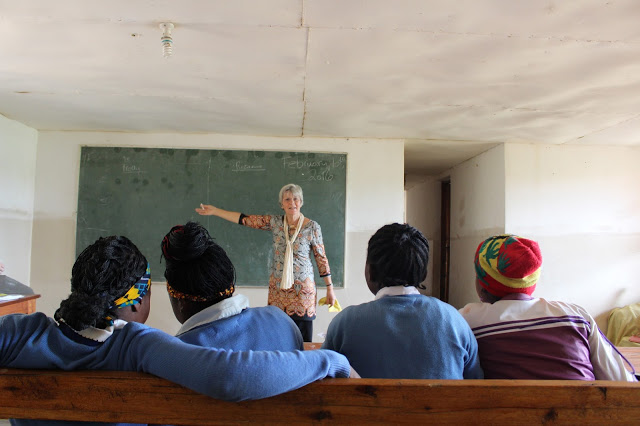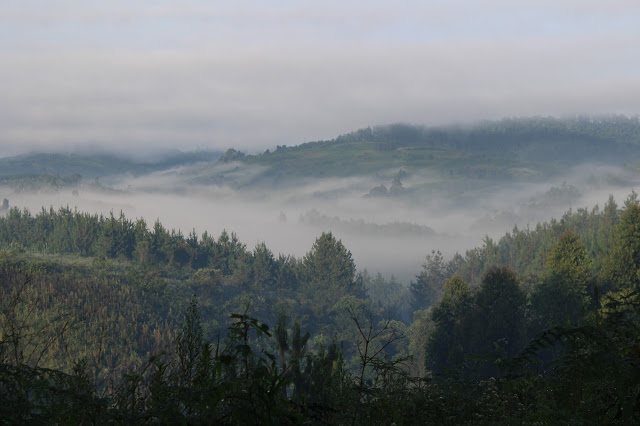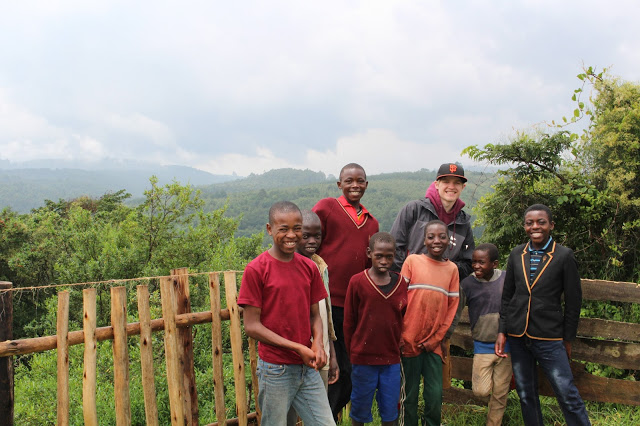Five incredible weeks at Foxes’ NGO, and I’m still not sure exactly what label to give the organization where I’m working – besides “NGO”. It’s non-governmental, sure, but it’s a lot of other things, too. And all of them are worth writing about.
What is this place? An orphanage? Yeah, kind of – though we don’t use that term, since it tends to paint a sad, Western, “institutional” picture – but more on that later. We have a school, too: a Montessori Kindergarten. And a nursery. There’s also a vocational sewing school, with an accompanying English class available to students out to advance their careers. And don’t forget the NGO’s health branch. The small clinic on-site features dentistry and pediatrics, but the scope of its operation is dwarfed by that of the NGO’s massive Home-Based Care program, which pretty much reaches the entire 16-village Mufindi district.
That’s the Clif’s Notes of the organization; my role in it is ever changing and somewhat difficult to define. I spend a lot of time with the Home-Based Care program, filing papers in the clinic, fixing syringes, following the doctors (transplants from Finland, Sweden, and the US) around on their door-to-door life saving routine, from which I’ve gained a tremendous amount of perspective and for which I believe the Vatican should consider canonizing them; I’ve helped teach a few English classes, which are organized and led by a brilliant and TOEFL-certified teacher from the UK; I do a little bit of media coordination, hang out with the guys from the Children’s Village (which is the aforementioned not-orphanage), and generally do whatever else the NGO may need on the side. I’m essentially a gopher.
An NGOpher.

Dr. Leena at work on Home-Based Care
So, why here? What brings such an incredible group of happy, hardworking individuals as this NGO’s staff out to rural Africa, where some of them are raising families and live full-time? Mufindi district has an HIV/AIDS prevalence rate of 35%. For pregnant women, it’s 45%. Polygamy is common and socially accepted. And an average farmer here (nine out of ten village men are farmers by trade) lives on $20 a month, which makes medication and treatment prohibitively expensive as well as distant. Education on the whole is extremely sub-par; it’s practically nonexistent for pre-primary kids and extremely difficult for high schoolers. University is a notion entertained only by the gifted, the wealthy, and the extremely determined. You pretty much have to be two of those three to have a chance.

English with the Sewing School students
It’s a rough world, but not a dark one. My village, Igoda – about half an hour’s walk from the NGO, uphill, both ways – has shown me that the people around here are some of the friendliest you’ll meet, even in the face of their overwhelming life circumstances. People are extremely accommodating, just like they were in Morogoro; kids will want high-fives or a football match, and adults will always greet you on the road. I have begun to wonder, though, whether people will ever stop staring at me in the village. Granted, I am Igoda’s only white resident. But everyone stares. Everyone. Still. And there are other wazungu passing through occasionally – right? I’m not the only pale-skinned person they’ve ever seen…am I? Not the only one, not in the vast majority of cases. Anywho, I’ve gotten used to it. The key is to perceive it not as unfriendliness, but as blunt unacquaintedness. They have no idea that staring is rude in Western culture. Plus, it can be kinda flattering sometimes.
My host-dad, Baba Isaya, is employed as an administrator at the NGO and is always willing to practice his English. His house is solid concrete, with a tin roof – which is pretty luxurious, by local standards – and even has a satellite dish attached to the temperamental electrical supply. Water, however, is a job for the river and the frequent, often torrential, rain.
Mufindi, by the way, is absolutely gorgeous. I don’t really know what I was expecting of the terrain here – endless golden savannah, maybe, or whatever Simba’s Pride Lands are – but I definitely didn’t anticipate this: Hills upon hills upon hills, endless, green, undeveloped, and elevated enough (around 5,500 feet) to deter humidity and mosquitoes. (If you’re from South Louisiana, where the latter two are constant and topography is a myth, this is an unbeatable combination.) Some areas are blanketed with verdant tea plantations, and others are streaked with government-owned hardwood groves, but mostly it’s that typical Nursery Rhyme vista: The round, monochrome hills and, sometimes, the single dirt path that rides up and down the sides as it disappears into the sunset. It really is incredible. I’m only just getting used to waking up inside a fairy tale every morning. I only wish my house weren’t perched atop one of the hills.

Mufindi mornings. This is literally my backyard.
What else, for the overview? Food. Hm. There isn’t a general overabundance of it around here, but we at the NGO are sustained by the on-site farm, which feeds the entire Children’s Village and the NGO staff each day – a total of around 100 people. A typical day includes a breakfast of bread and chai; a lunch of beans and ugali (pronounced like ‘Ooh! Golly!’, but always with significantly less enthusiasm; I’ve taken to calling it “corn pudding” in an effort to make it sound more appetizing); and, for dinner, lunch again. An a typical day includes a hardboiled egg for breakfast, or maybe, as a substitute for the corn pudding, rice. But not both egg and rice. That would be ridiculous.
Yeah, that might do it for the overview. Days here are full to bursting, and I fall asleep as soon as I hit the pillow every night, but I’m going to redouble my efforts to write about all things Mufindi during my remaining five weeks on the job. This stuff is too powerful not to share. Doing it justice in writing will be nearly impossible, and I may not get too far – but I definitely won’t to be lacking for subject matter.

House 3 squad + Luke
— Jack Dubreuil
